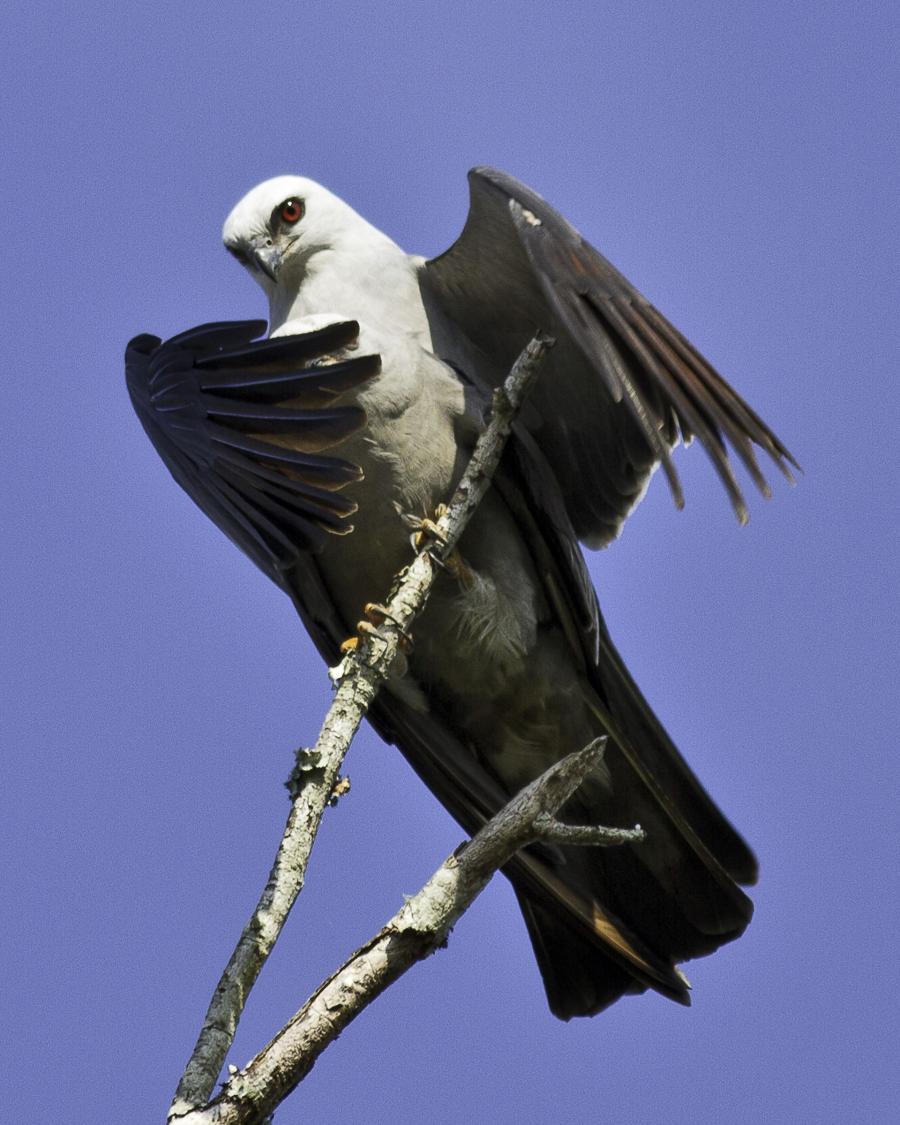SCIENTIFIC NAME:
Ictinia mississippiensis
OTHER NAMES:
Mosquito Hawk, Blue Snake-hawk, Hovering Kite and Locust-eater.
STATUS:
Breeder. Fairly common in spring, summer, and fall in Inland Coastal Plain and Gulf Coast regions. Rare and local in spring, summer, and early fall in Tennessee Valley. In Mountain region, rare but increasing in spring, summer, and fall. Low Conservation Concern.
DESCRIPTION:
Mississippi kites belong to Class Aves, Order Falconiformes, Family Accipitridae and Genus Ictinia. The Mississippi kite varies in length from 12 to 15 inches, weight is eight to 13 ounces, and wingspan is 41 to 44 inches. The adult Mississippi kite has a white to pale gray head, with black around the eye. The upper wings are slate gray and the upper secondary wing feathers white. When seen in flight and from below, the body looks light to medium gray with the wings a darker gray. The tail is square, blackish and sometimes slightly notched. Young kites have a brown streaked breast with a banded tail.
DISTRIBUTION:
Mississippi kites are found in the southern parts of the midwestern and southeastern United States. The distribution is uneven due to colonial nesting, with the greatest numbers found in the southern Great Plains. In Alabama they can be seen in the black belt region down to the transition zone between the upper and lower coastal plain. The largest concentration is found along the rivers of the lower coastal plain in south Alabama. They migrate as far south as the continent of South America.
HABITAT:
Mississippi kites nest in wooded areas. They are normally found where woodland are adjacent to rivers, grasslands, or savanna type habitats. They prefer riparian habitat over continuous forest.
FEEDING HABITS:
The Mississippi kite is a graceful flier that can spend hours soaring in the air. It is a gregarious bird, traveling in flocks and even nesting in small colonies. The kite feeds on insects, usually grasshoppers, dragonflies, and mosquitoes. It normally searches for prey while in flight and often eats while in the air. Mississippi Kites can often be seen in large groups foraging in freshly cut hayfields, even flying behind tractors looking for insects. It sometimes preys on small birds, bats, reptiles, and amphibians.
LIFE HISTORY AND ECOLOGY:
Mississippi kites reach sexual maturity in two years and begin to breed. They find mates on the wintering grounds and during migration to nesting areas. They will nest singularly or in colonies with four to six pairs.. The nest is usually built in the top of large mature pine and hardwood trees. They will return to an old nest and reuse it. They lay one or two eggs and both parents assist with incubation for 29 to 31 days. The fledglings can fly by 50 days and are fed by the parents until they are at least 60 days old. Sub-adult birds have been observed assisting with incubation, feeding and defending the nest.
REFERENCES:
“The Peregrine Fund: Mississippi Kite.”
https://peregrinefund.org/explore-raptors-species/kites/snail-kite
AUTHOR:
James Altiere, Alabama Division of Wildlife and Freshwater Fisheries






